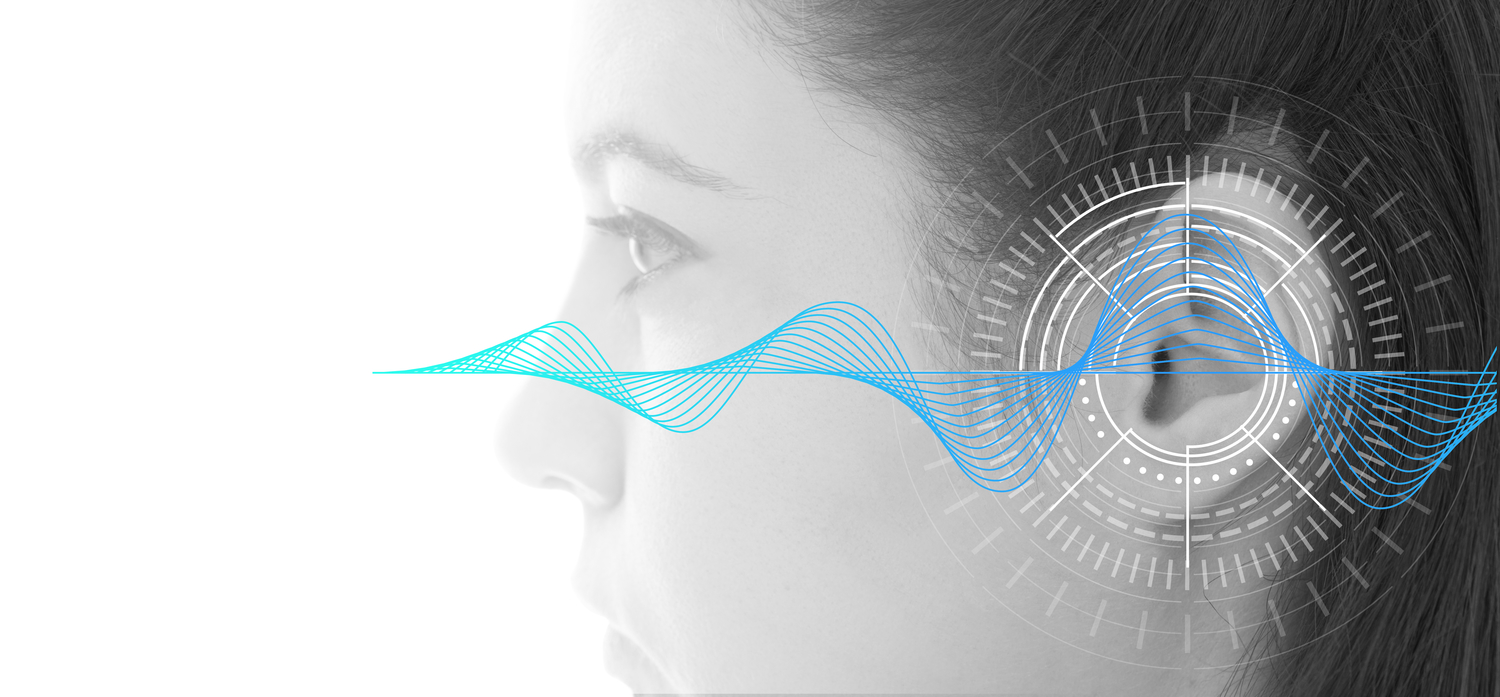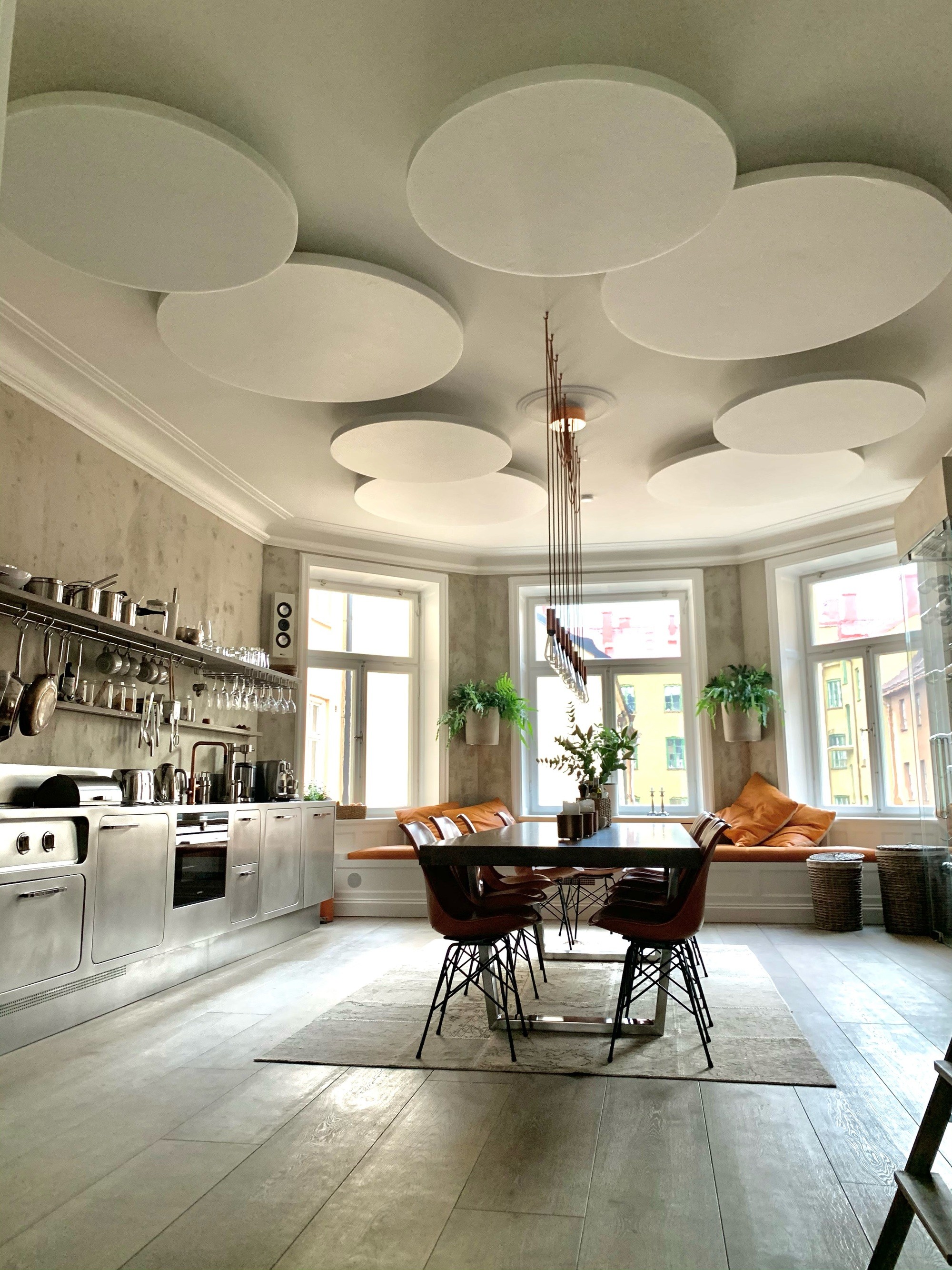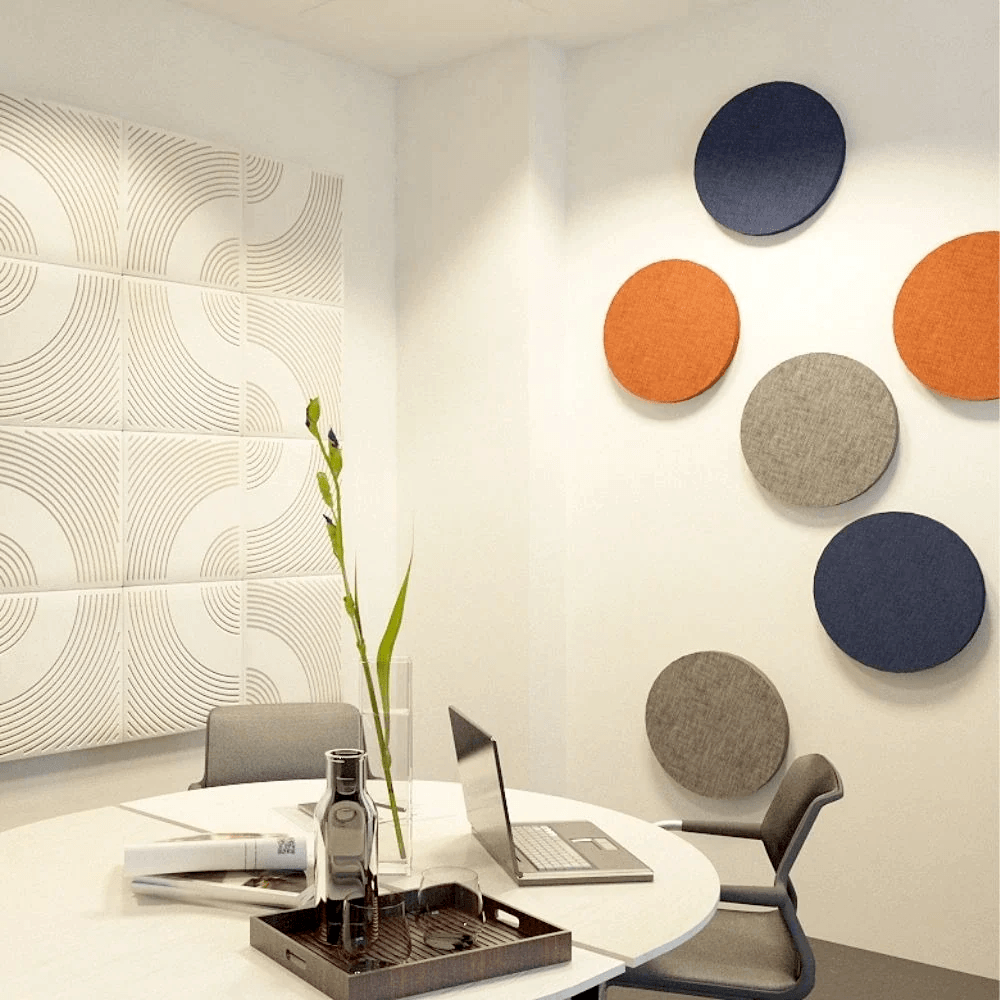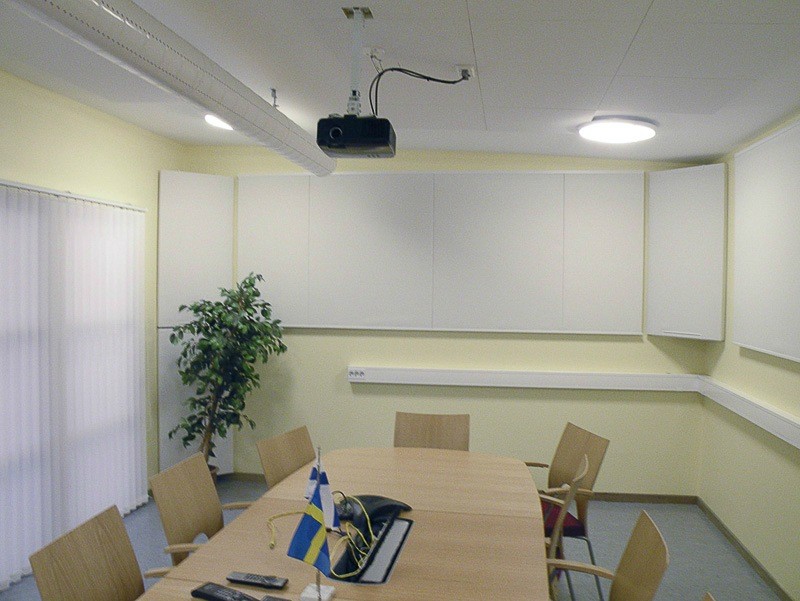Absorb high-frequency sound – For a pleasant and stress-free sound environment
High-frequency sounds can quickly make the sound environment in offices, restaurants, homes, and public spaces stressful and unpleasant. These are often sounds such as conversations, ringing phones, clattering cutlery, glasses, or echoes from keyboards. These sounds are easily reflected off hard surfaces such as glass, concrete, and tile, creating a sharp, echoing, and stressful sound environment. To increase well-being, concentration, and comfort, it is therefore crucial to absorb these high-frequency sounds in the right way.
Why is high-frequency sound a problem?
When high-frequency sounds are reflected in a room, it creates an unclear sound environment, where conversations become difficult to hear and concentration is impaired. Sounds from conversations, telephones, keyboards, and cutlery clattering in restaurants can feel particularly intrusive and contribute to stress and irritation. In work environments such as open-plan offices and meeting rooms, this can lead to reduced productivity and fatigue among employees.
Effective methods for absorbing high-frequency sound
To effectively absorb high-frequency sound, materials with good acoustic properties are needed that can convert sound energy into heat. Soft and porous materials, such as acoustic panels made of polyester fiber or mineral wool, are particularly effective because they absorb sound waves instead of allowing them to bounce off.
A successful strategy is to place sound absorbers where the sound is most reflected, for example, on ceilings and wall surfaces opposite large windows, concrete walls, or tiled surfaces. Ceiling absorbers are often the first and most effective measure, as the ceiling surface is large and rarely disturbed by interior design or furniture.
Optimal placement of sound absorbers
For the best possible results, sound absorbers should be strategically placed close to the sound sources. In restaurants and cafés, sound absorption is recommended directly above dining areas and around serving areas. In office environments, absorbers can be installed close to workstations, in meeting rooms, and in corridors to improve speech intelligibility and reduce background noise such as conversations and keyboard sounds.
Feel free to combine sound absorbers of different thicknesses and materials to effectively cover a wide frequency range. Curtains, carpets, and other soft textiles work well as complements to further dampen sound reflections.
All environments benefit from good sound absorption
High-frequency sound absorption is a solution that is suitable for a wide variety of environments. In addition to offices and restaurants, it is ideal in schools, preschools, libraries, and healthcare facilities, where a quiet sound environment is particularly important for learning, concentration, and well-being. Even home environments, especially kitchens, dining rooms, or living rooms with very hard surfaces, can benefit greatly from sound-absorbing materials.
By investing in effective high-frequency sound absorption, you can create a calmer, more harmonious, and pleasant environment. You reduce stress levels and improve comfort for everyone in the room.
Summary – Why high-frequency sound absorption is important
To create an acoustically pleasant environment and reduce disturbing echoes and reflections from high-frequency sounds, you should use sound absorbers in strategic locations in your space. By choosing the right materials and placing them carefully, you can significantly improve the acoustics, leading to increased comfort, better concentration, and reduced stress. Whether you need to improve the sound environment in an office, restaurant, home, or public space, high-frequency sound absorption is an effective and long-term investment in well-being and productivity.












